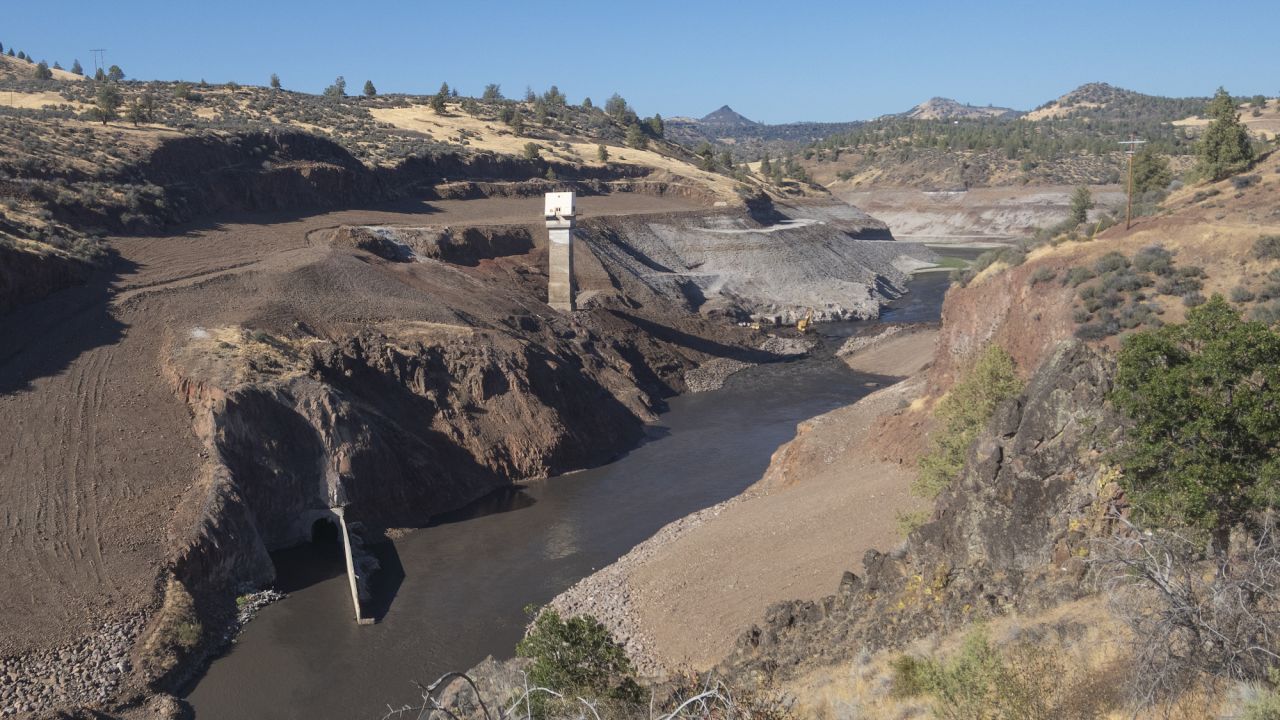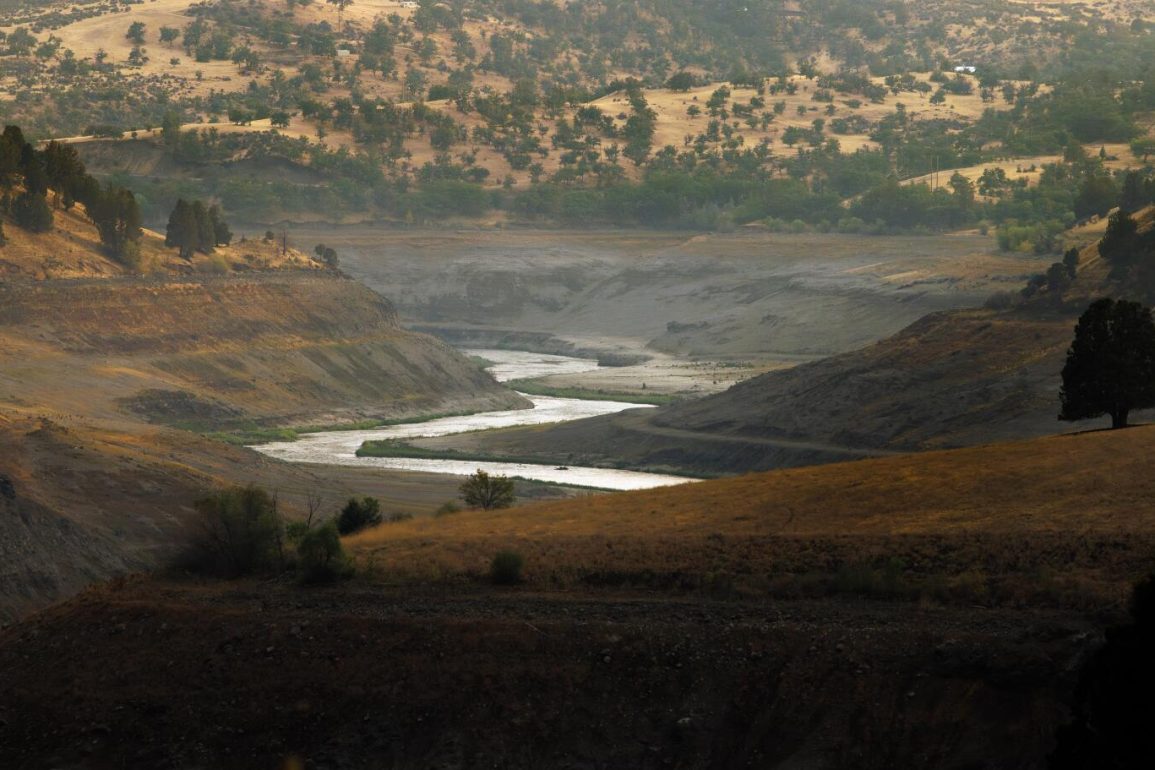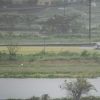The largest dam removal project in U.S. history has been completed, with crews last week demolishing the final dam of the four on the Klamath River. This marks a major victory for the tribal nations along the Oregon-California border, who have long advocated for restoring the river to its natural state.
The removal of the four hydroelectric dams—Iron Gate Dam, Copco Dams 1 and 2, and JC Boyle Dam—now allows the iconic salmon population of the region to swim freely through the Klamath River and its tributaries, something they have been unable to do for over a century since the dams were erected.
Mark Bransom, CEO of the Klamath River Renewal Corporation, the nonprofit organization overseeing the project, described the completion as a “celebratory moment.”
He noted that staff members, conservationists, government officials, and tribal members gathered on the riverbank near the former site of the largest dam, Iron Gate, to celebrate the achievement.
Federal regulators approved the demolition plan in 2022. The following year, the smallest of the four dams, Copco No. 2, was removed. At the start of this year, crews began releasing water from the dams’ reservoirs, which was a necessary step before dismantling the remaining dams.
The Klamath River system has been a source of controversy, particularly during the recent historic Western drought, which led to a contentious water conflict between local farmers and Indigenous tribes, government agencies, and conservationists.
For Indigenous people living along the Klamath and its tributaries, the dam removal has been a source of immense relief and joy. “We all came together in the moment with a feeling that ranged from pure joy to anticipation to excitement,” Bransom told.
“For the first time in over 100 years, the river is now back in its historical channel, and I think that was an extraordinarily profound moment for people to actually witness that—the reconnecting of a river.”
The Yurok Tribe of Northern California, known as the “salmon people,” view salmon as sacred, central to their culture, diet, and ceremonies. According to their traditions, the spirit that created salmon also created humans, and without the fish, they believe they would cease to exist.
Amy Bowers-Cordalis, a member and general counsel for the Yurok Tribe, said the removal of the dams signifies “freedom” and the beginning of the river’s “healing process.”

She emphasized that restoring the river is crucial for future generations to continue the Yurok fishing tradition.
“The river for Yurok has always been our lifeblood,” Bowers-Cordalis explained. “Restoring the river enables future generations to have a shot at continuing the Yurok fishing way of life.”
The manmade dams, along with warm water and prolonged droughts, had significantly altered the river and its dependent ecosystems, particularly the salmon population. Chinook and coho salmon, which start their lives in freshwater, migrate to the ocean and return to spawn. They face numerous dangers throughout their lifecycle.
In 2002, a viral outbreak caused by warm temperatures and low water levels killed over 34,000 fish, primarily chinook salmon, on the Klamath River. This event was a turning point for the Yurok and other tribes, who see salmon as culturally and spiritually significant, leading them to advocate for the dams’ removal.
The dams, built by the utility company PacifiCorps—a subsidiary of Warren Buffett’s Berkshire Hathaway Energy—in the early to mid-1900s, were constructed without tribal consent to provide electricity for the expanding West. However, the dams severely disrupted the salmon’s lifecycle by blocking access to their historical spawning grounds.
Climate change has further exacerbated the situation, with warm water and drought-induced water shortages killing salmon eggs and young fish due to low oxygen levels and food scarcity, while also promoting the spread of viruses.
Julie Alexander, a senior researcher at Oregon State University, noted that even without climate change, dams alter river flow regimes and water temperatures, as reservoirs act as thermal units warming up in summer. This exacerbates pathogens and concentrates fish, leading to increased parasite transmission.
Despite the monumental achievement, there were concerns about water quality as sediment buildup behind the dams was released, turning the river into muddy brown water and affecting local wildlife. Bransom acknowledged this as “short-term pain for long-term gain.”
The removal of the dams, which collectively generated less than 2% of PacifiCorp’s energy, is not expected to significantly impact power supply. The focus now shifts to restoration work, with plans to plant nearly 16 billion seeds of almost 100 native species across 2,200 acres in the Klamath River Basin.
With the river now restored, Yurok’s Bowers-Cordalis views the reconnection as a significant step towards returning their land, which she describes as the “ultimate reward.”

